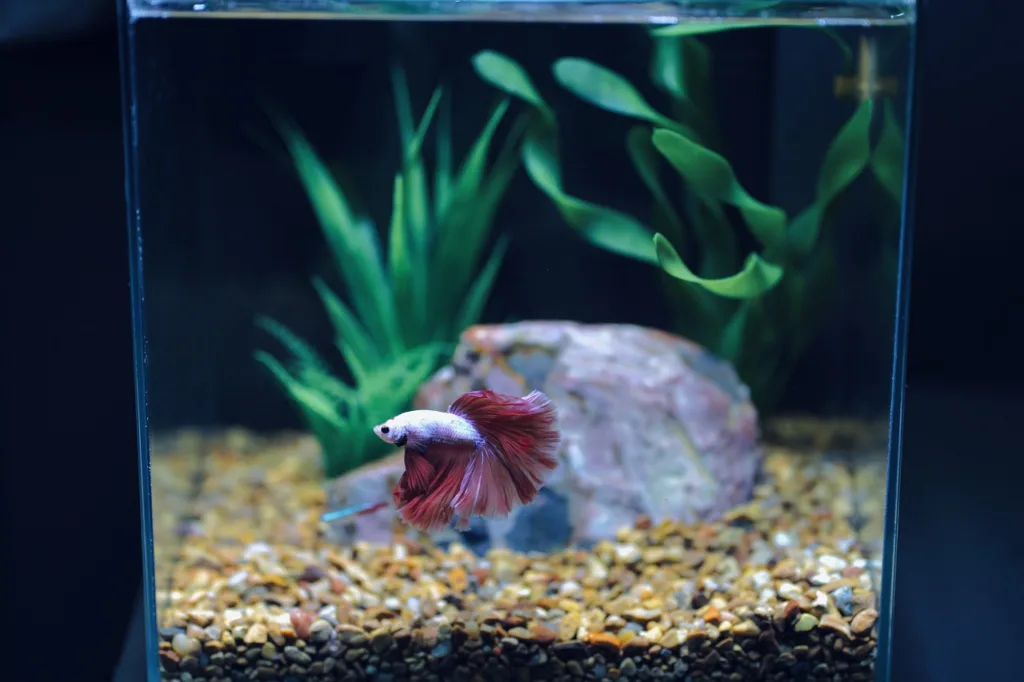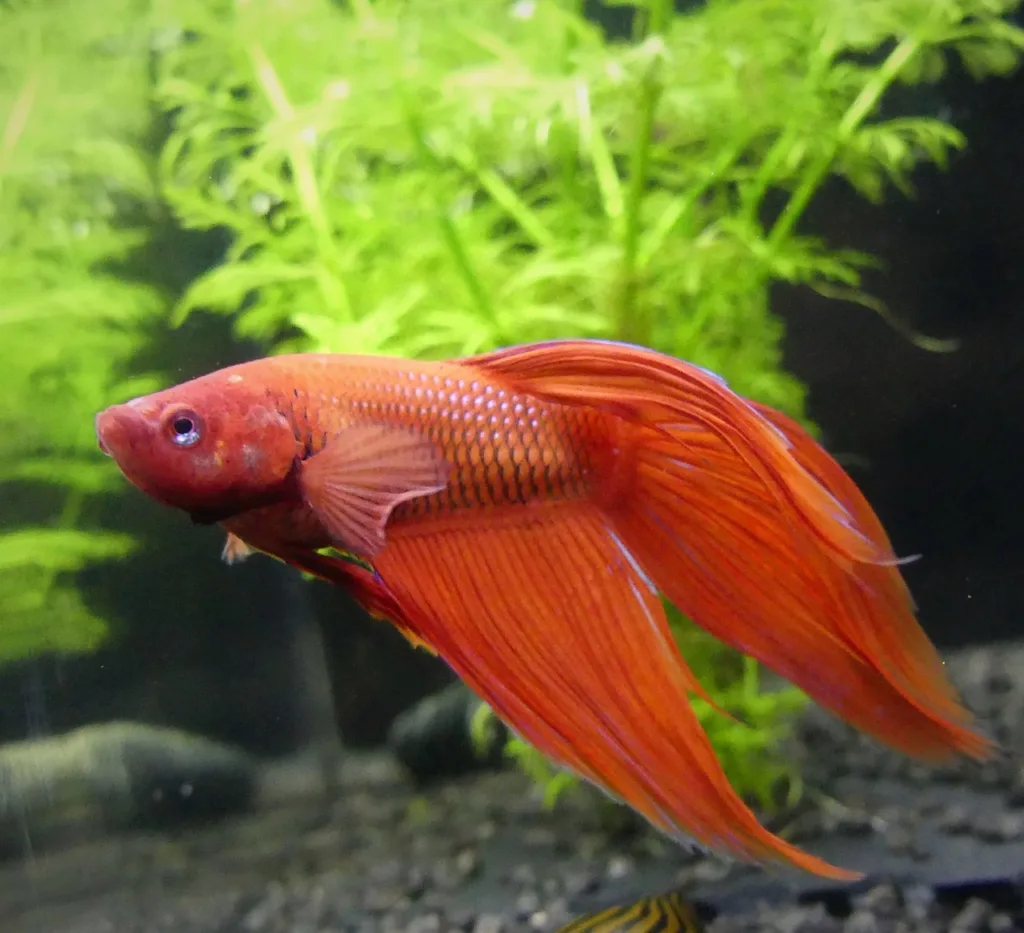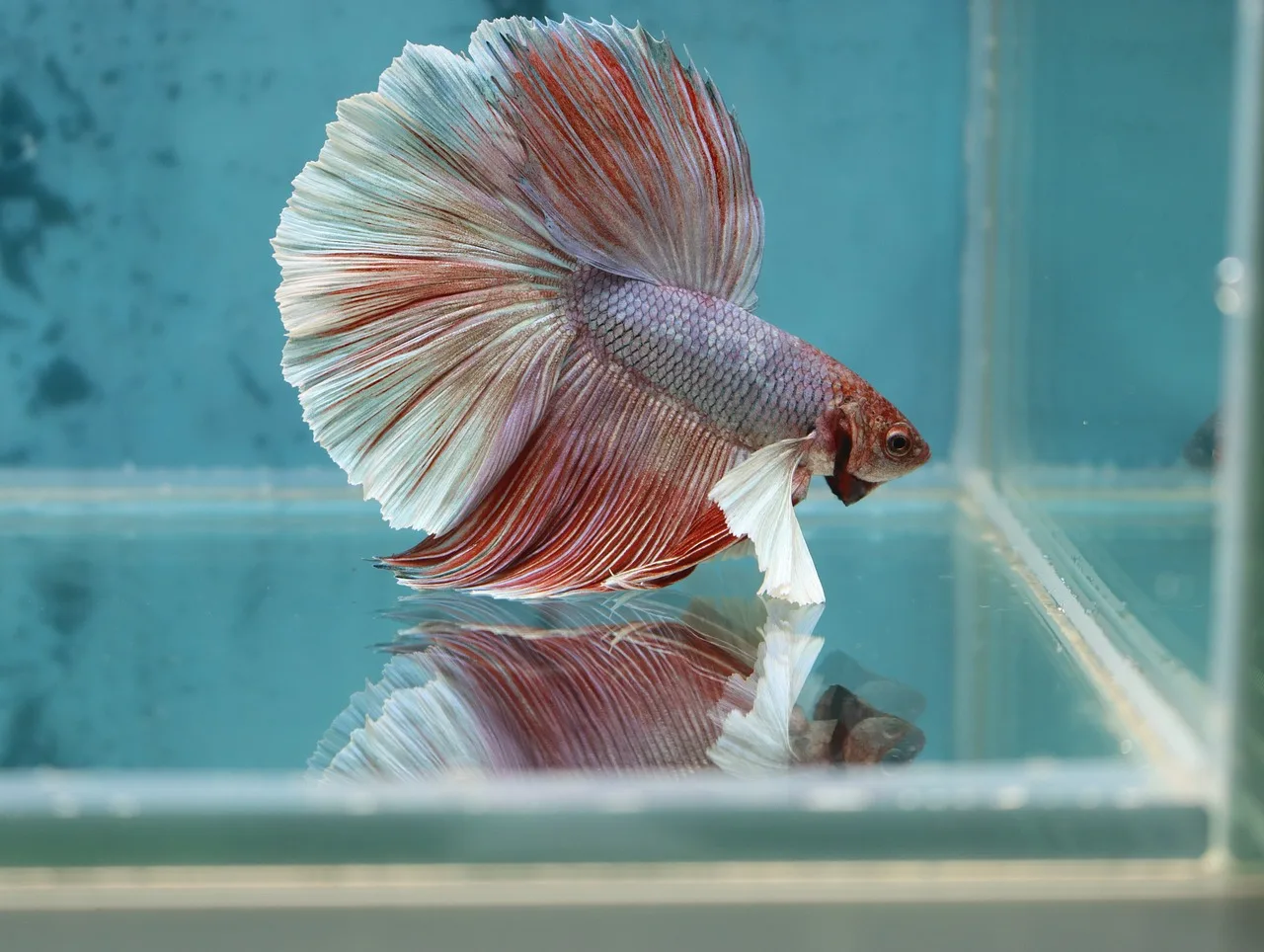Hey there, fellow Betta lover. You’re not alone if you’ve ever been caught off-guard seeing your Betta fish shoot up and seemingly try to leap out of their tank. I’ve been there, sipping my morning coffee, only to almost spill it because my Betta decided it was time for some high jump practice. Why, you ask? Are they training for the Betta Olympics? (I kid, there’s no such thing, but imagine that for a second!)
Bettas are genuinely some of the most fascinating little creatures. Their vibrant colors, flowing fins, and sometimes sassy personalities make them one of the most loved aquarium pets. But along with their beauty comes their intriguing, sometimes puzzling behaviors. And one of the most mind-boggling (and slightly nerve-wracking) is their ability to jump.
But why do they do it? How high can Betta Fish jump? And, most importantly, how can we ensure our friends are safe when they get those sudden urges to become acrobats? Dive in with me (pun intended) as we explore the world of Betta jumps and how to ensure our pets stay safe and happy in their watery homes!
Betta Jumping Behavior
Alright, let’s get to the fun stuff. If you’ve spent time observing your Betta, you’ve probably seen that flash of movement, that sudden leap and splash. But what’s behind these aquatic acrobatics?
- The Wild Instincts
- First and foremost, Bettas are wild at heart. In their natural habitats, which are the shallow rice paddies, ponds, and streams of Southeast Asia, jumping can be a means of survival. When their watery homes dry up or become too crowded, they’ll jump to seek out new waters. Sometimes, they’ll even leap to snatch an unsuspecting insect off a low-hanging leaf! It’s all about food and survival.
- Territorial Tango
- If you know anything about Bettas, you know they have an attitude, especially the males. They’re like the little bad boys of the fish tank world. Those jumps you see might be a display of their territorial nature. It’s their dramatic way of saying, “Hey, this is my pad!”
- Stress and Environment
- This is where we, as pet owners, need to pay more attention. Sometimes, a jump is more than a show-off move or a food-seeking tactic. It could be a sign of stress. The water quality isn’t right, or there’s too much noise or activity around their tank. Jumping can sometimes be their desperate attempt to escape an unhappy environment.
- The Curious Explorer
- Lastly, Bettas are curious little beings. Like cats might suddenly pounce at a flickering shadow, Bettas sometimes jump because they feel like it! They might be exploring their surroundings or reacting to something they saw outside the tank (like your face getting too close during one of your staring contests).
So, the next time you see your Betta jumping, know it’s not just random fishy behavior. It mixes wild instincts, personality, environment, and pure Betta quirkiness. But remember, while it’s fascinating to observe, always ensure they’re safe and not trying to tell you something’s amiss!
How High Can Betta Fish Jump?
Alright, so we’ve established that Bettas have a knack for jumping. But you’re probably wondering, “How high can Betta Fish jump?” Strap in because there’s more to this than you might think.
Betta fish are recognized for their talent to leap from the water. Under the right conditions, they can jump several inches.
While there isn’t an exact maximum height documented for all bettas, many owners and breeders have reported their bettas jumping 2 to 3 inches and, in some instances, even more. The size can vary based on individual fish, their age, health, diet, and the conditions of their environment.
- Tank Size and Water Depth
- Okay, let’s start with the basics. Size matters. Just like you’d jump higher on a trampoline than on solid ground, the depth and size of a tank can affect your Betta’s jump. A deeper tank gives them more space to gather momentum. But here’s a twist: they might not even bother trying to leap that high in too deep a tank. After all, they’re intelligent and energy-saving creatures.
- Water Quality
- Have you ever tried running when you’re feeling under the weather? Not your best performance, right? Similarly, suppose the water in your Betta’s tank isn’t clean. In that case, it can affect their overall health and, by extension, their jumping prowess. Clean, well-aerated water ensures your Betta feels like an Olympian ready for the high jump. Conversely, poor water quality can make them sluggish and less active.
- Diet and Nutrition
- It’s all about that fuel. A well-fed Betta with a balanced diet is like an athlete on a proper nutrition plan. When they get the right mix of proteins and nutrients, their muscles are in top shape. This means they can jump higher and with more energy. So, feed them high-quality Betta pellets and occasionally treat them to live or frozen foods like bloodworms or brine shrimp. You might witness some record-breaking jumps!
- Tank Decor and Environment
- Think of their tank decor as their personal gym. Plants, rocks, and other decorations provide great resting spots. Still, they can also act as launching pads for our adventurous Bettas. If you’ve placed a tall plant or a decoration close to the water’s surface, don’t be surprised if your Betta uses it as a springboard for some aerial stunts. But remember, while decorations can encourage jumping, ensure they’re also safe and don’t have sharp edges that could harm your fish.
There you have it, the secrets behind those gravity-defying jumps. But while it’s cool to see our Bettas leap and play, ensuring their safety is always crucial. So, consider these factors, set up that perfect environment, and prepare for the show!

How To Prevent Betta Fish From Jumping?
We’ve all had fun marveling at our little aquatic athletes, but let’s get down to serious business. We adore our Betta buddies, and their safety is our top priority. Those leaps and jumps, while fascinating, can sometimes lead to accidents or even escape attempts! So let’s talk about ensuring our little finned friends stay on the right side of the tank.
- Tank Lid: The First Line of Defense
- I can’t stress this enough: Get. A. Lid. It’s like the seatbelt in your car; it’s a non-negotiable. A tight-fitting lid will ensure that even if your Betta goes for a surprise jump, they won’t end up out of the tank.
- When choosing a lid, ensure it has small openings or mesh for adequate ventilation. We don’t want our pets to suffocate.
- Water Level: Not Too High, Not Too Low
- Filling your tank to the brim gives your Betta the maximum space to swim. But in reality, it’s like removing the fence from a trampoline. Leaving about an inch or two from the top gives a buffer zone, reducing the chances of an over-enthusiastic jump leading to an escape.
- Tank Placement: Keep the Drama Low
- Believe it or not, where you place your tank matters. Please keep it away from high-traffic areas in your home where sudden movements or noises might startle your Betta. Being in a quieter space reduces stress (and thus jumps) and makes for a happier fish overall.
- Avoid Overcrowding: Give Them Space
- Remember how we talked about Bettas being territorial? Overcrowding can stress them out, making them more likely to jump. If you’re considering introducing new tank mates, always research and ensure you have enough space for everyone to coexist peacefully.
- Regular Check-ups: Know Your Betta
- Keep an eye out for signs of stress or illness. Frequent, frantic jumping can be a signal that something’s not right. It might be water quality, temperature, or even an unseen injury. Regular check-ups and water tests can keep things in check.
Alright, team, there we have it. With these safety measures in place, we can let our Bettas enjoy their playful jumps without any worrisome consequences. It’s all about creating that balance – letting them be their natural, energetic selves while ensuring they’re safe and sound. After all, we want our little buddies to have the time of their lives in the right environment!
What to Do if Your Betta Jumps Out
Alright, deep breath. Nobody likes to think about this scenario, but being prepared is crucial. If you find your Betta has taken a daring leap outside the tank, don’t panic. Quick and calm action can make all the difference. Here’s what to do:
- Act Swiftly But Gently
- Time is of the essence. But while you might be tempted to move at lightning speed, handling your Betta gently is vital. Use a soft, wet cloth or your hand to carefully pick them up, minimizing the risk of injury.
- Immediate Return to the Tank
- Gently place your Betta back into the tank. Avoid simply dropping them in. A gentle re-entry ensures minimal stress and shock.
- Check the Water
- Before you think the ordeal is over, ensure the tank’s water parameters are optimal. Ensure the temperature, pH, and other factors are correct. A stressed Betta needs the best environment to recover.
- Observation is Key
- Monitor your Betta closely for the next several hours. Check for any signs of stress or injury. Rapid breathing, lethargy, or not eating are signs you need to be on the lookout for.
- Maintain Optimal Conditions
- Over the next few days, ensure the water is clean and the environment is calm. There is a better time for any tank cleanings or significant changes. You want a stable and stress-free zone for your Betta to recover.
- Consider Making Changes
- If your Betta jumped once, they might try it again. Review the safety precautions we discussed earlier. You may need a better lid or to adjust the water level.
- Consult a Veterinarian if Needed
- If you notice any prolonged signs of stress or injury, it might be time to consult with a fish vet. Yes, they exist! And they can offer specialized advice and care for your finned friend.
Here’s hoping you never have to face this situation. But if you do, remember: Stay calm, act quickly, and give your Betta the best care and attention afterward. They’re resilient little fighters; with some love and care, they can bounce back from their adventures outside the tank!

Conclusion
Well, my fellow Betta lovers, we’ve been on a journey! From marveling at our Betta’s high-flying acrobatics to diving deep into the whys and hows of their jumping behavior, we’ve covered quite a bit of ground (or, should I say, water?).
You will probably see your Betta in a new light. They’re not just our dazzling, colorful companions but intricate beings with behaviors rooted in instinct, environment, and, sometimes, a sprinkle of fishy whimsy. Their ability to jump, while mesmerizing, serves as a reminder of the wild and unpredictable essence that still courses through their fins, even within the confines of our homes.
But as we’ve learned, incredible power (or, in this case, excellent jumping ability) comes with great responsibility. As Betta keepers, we provide a safe, stimulating, and healthy environment. That means understanding their behaviors, anticipating potential risks, and always being prepared to step in and offer care when needed.
So, the next time you see your Betta eyeing the surface, getting ready for a leap, or simply gliding gracefully in its watery domain, take a moment to appreciate the complex and beautiful creature you’re privileged to share your space with. And remember, whether in the air or underwater, they always have a story to tell, and it’s up to us to listen and understand.
To many more years of Betta love, care, and, yes, occasional heart-stopping jumps! Keep swimming and keep smiling.
